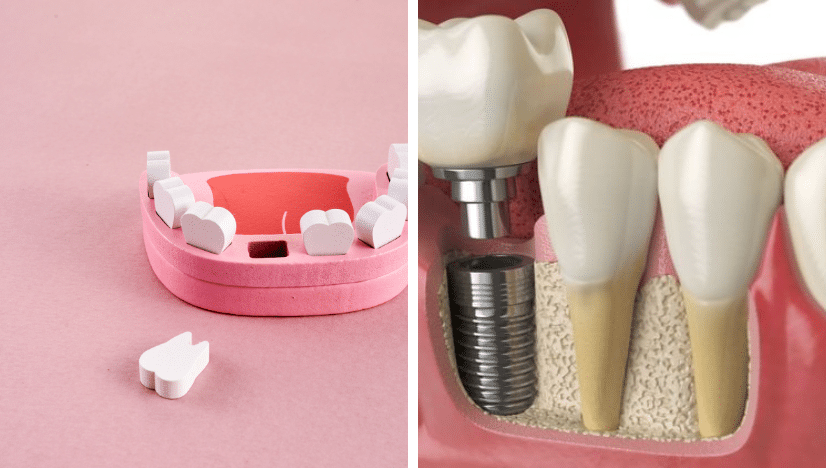
Tooth loss doesn’t just leave a gap in your smile—it also affects the bone structure of your jaw. When a tooth is missing, the jawbone begins to deteriorate over time, leading to a weaker foundation for surrounding teeth. Luckily, bone grafting treatment steps in to save the day by reversing these effects and giving you a fresh start. But what is bone grafting treatment, and how exactly does it work? Let’s break it down.
What is Bone Grafting Treatment?
Bone grafting treatment is a dental procedure designed to restore the bone in your jaw that may have deteriorated due to tooth loss, gum disease, or injury. It involves placing grafting material, either synthetic or natural, in the affected area to stimulate the growth of new bone. This not only strengthens your jaw but also preps it for future dental procedures like implants, ensuring a strong, solid foundation.
How Does Bone Grafting Help Reverse Tooth Loss?
When you lose a tooth, the jawbone beneath that tooth starts to shrink because it’s no longer being stimulated by chewing pressure. Bone grafting treatment works by reversing this bone loss and restoring the jaw’s natural structure, allowing you to regain both function and aesthetics.
Why Do You Need Bone Grafting Treatment After Tooth Loss?
- Prevents Jawbone Deterioration
Without the natural pressure from teeth, your jaw starts to lose density, leading to a weaker structure. Bone grafting treatment can stop this process in its tracks and help regenerate bone, making sure you have a healthy base for future teeth replacements or implants. - Improves Dental Implant Success
For dental implants to be successful, you need a strong, stable jawbone. Without it, implants can fail. By undergoing bone grafting treatment, you’re essentially preparing your jaw to hold the implant in place securely. - Restores Facial Structure
The bone in your jaw plays a big role in maintaining your facial shape. As it shrinks due to tooth loss and bone resorption, it can lead to a sunken appearance. Bone grafting treatment helps you avoid that by rebuilding the bone and keeping your facial structure looking natural and youthful.
What Happens During the Treatment?
Now that we’ve covered why bone grafting treatment is essential after tooth loss, let’s dive into what actually happens during the procedure. Your dentist will first assess the area needing bone grafting. Depending on the severity of the bone loss, they’ll recommend a specific type of grafting material. This can range from synthetic options to materials sourced from your own body (typically from another area of your mouth or jaw).
Once the grafting material is placed, it encourages the surrounding bone to grow, gradually filling in the missing bone. The healing process takes several months as the new bone fuses with the existing structure, eventually creating a solid foundation for implants or other dental work.
Types of Bone Grafting Treatment
There are a few different types of Bone Grafting Treatment available depending on the patient’s needs:
- Autografts
In this type of bone graft, the material is sourced from your own body, such as the chin or back of the jaw. Since it’s your own tissue, there’s a lower risk of rejection, making it a popular option for many. - Allografts
These are sourced from a donor and sterilized before being placed in your jaw. While they aren’t from your body, they are still very effective in stimulating new bone growth. - Xenografts
These use bone from animals, most commonly cows, and are processed for safety. This type of treatment is typically used when a larger amount of bone needs to be restored. - Synthetic Grafts
Synthetic bone grafting materials are lab-made and can offer a great alternative to natural bone. They work by providing a scaffold for your natural bone to grow around.
Bone Grafting and Dental Implants: A Dynamic Duo
If you’re considering dental implants after tooth loss, bone grafting treatment can play a huge role in your implant success. Since implants rely on a strong jawbone to hold them in place, ensuring your jaw has enough density is crucial. By undergoing bone grafting beforehand, you’re setting the stage for successful and long-lasting dental implants.
Bone grafting not only builds up the bone but also increases the chances that your dental implant will integrate properly with the jaw. This results in a strong, natural-looking smile that can last a lifetime with the right care.
How Does this Treatment Support Long-Term Oral Health
The benefits of the treatment go beyond just aesthetic fixes—they’re a big part of maintaining your long-term oral health. A strong jawbone supports your teeth and gums, and bone grafting restores the balance lost through tooth loss or decay. Over time, it can help prevent future oral health issues by giving your jaw the strength it needs to function properly.
Maintaining Your Smile After Bone Grafting Treatment
Once you’ve undergone the treatment, you want to keep that new, strong foundation in great shape. Here’s how:
- Brush Twice Daily
Keep your oral hygiene on point by brushing twice a day with fluoride toothpaste. - Floss Regularly
Don’t forget to floss! It helps get rid of plaque between teeth and along the gumline. - Regular Dental Checkups
Continue with regular dental visits to ensure your grafted bone is healing properly and your overall oral health stays in check. - Healthy Diet
Fuel your body with calcium-rich foods that promote strong bones and teeth.
Incorporating it into your dental care plan is a game-changer when dealing with the effects of tooth loss. By restoring bone density, improving dental implant success, and maintaining facial structure, this treatment has it all. If you’re in need of bone grafting, talk to your dentist about the best approach for your smile. For those in need of bone grafting in Los Angeles, CA, the right treatment could be closer than you think! For patients considering bone grafting, this treatment can restore not only the function but also the appearance of their smile, giving them a second chance at healthy teeth and gums.


